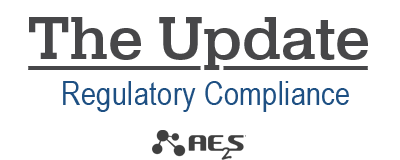U.S. Congressional members are considering several bills that could affect the water industry. A summary of a select few follow.
PFAS National Drinking Water Act of 2025
Bipartisan legislation has been introduced to codify the first-ever national primary drinking water regulation for per- and polyfluoroalkyl substances (PFAS) proposed by the U.S. Environmental Protection Agency (USEPA). The PFAS National Drinking Water Standard Act of 2025, H.R. 4168, would ensure Federal regulatory stability and prevent future rollbacks regardless of changing administrations.
Like the PFAS national primary drinking water regulation that was announced in April 2024, the PFAS National Drinking Water Act of 2025 would establish enforceable maximum contaminant levels (MCLs) for the most hazardous PFAS chemicals in public drinking water systems. A news release from the sponsor of the bill, Rep. Brian Fitzpatrick of Pennsylvania, said, “by giving this rule the full force of Federal law, the bill ensures these standards remain durable, enforceable, and insulated from future regulatory uncertainty or reversal.”
If approved, the legislation would affirm the limits proposed by USEPA for five individual PFAS: PFOA, PFOS, PFNA, PFHxS, and HFPO-DA (also known as “GenX Chemicals”) and set a limit for mixtures of any two or more of four PFAS: PFNA, PFHxS, PFBS, and “GenX” chemicals.
- Enforceable MCL set at 4.0 parts per trillion (ppt) for PFOA and PFOS, individually. The standard will reduce exposure in drinking water to the lowest levels that are feasible based on the current analytical methods.
- Maximum Contaminant Level Goal (MCLG) and MCL set at 10 ppt for PFNA, PFHxS, and GenX Chemicals. (An MCLG is a non-enforceable health-based goal).
- MCLG for PFOA and PFOS of zero.
- Health Based Water Concentrations (HBWC) set at 10 ppt for PFNA, PFHxS, and GenX and 2,000 ppt for PFBS.
- Hazard Index (HI) of 1 for any mixture of two or more of the following: PFNA, PFHxS, PFBS, and GenX Chemicals. The Hazard Index represents the sum of quotients calculated by dividing the analytical result for PFNA, PFHxS, PFBS, and GenX by the respective HBWC.
The USEPA rule requires public water systems to inform the public of the level of PFAS measured in their drinking water. If PFAS are found at levels that exceed the standards, systems must implement solutions to reduce PFAS in their drinking water within five years, by 2029.
Promoting Efficient Review for Modern Infrastructure Today (PERMIT) Act
The Promoting Efficient Review for Modern Infrastructure Today (PERMIT) Act, H.R. 3898, aims to cut red tape, streamline review procedures, and enhance regulatory clarity under the Clean Water Act (CWA). The PERMIT Act was introduced in the House of Representatives in June.
The bill would amend section 502(7) of the Federal Water Pollution Control Act to list what the term “navigable waters” does not include. The PERMIT Act would codify Waters of the United States (WOTUS) exclusions for water treatment systems, ephemeral streams, groundwater, and prior converted cropland that were previously included as part of WOTUS regulations. Supporters say the legislation would provide consistency for farmers and other groups that relied on the exclusions in the past.
Nationwide Permitting Improvement Act
The Nationwide Permitting Improvement Act, H.R. 3927, would amend the Federal Water Pollution Control Act with respect to general permits for linear infrastructure projects that result in a discharge of dredged or fill material into less than three acres of navigable waters for each single and complete project. If approved, the legislation would codify longstanding, historical interpretation and practice around the Nationwide Permit (NWP) process and provide clarity.
The U.S. House will take a break from August 1 through September 1, and the U.S. Senate will recess from August 4 through September 1. AE2S staff and The Update newsletter will continue to monitor the legislation that affects the water industry and report notable findings to our readers.

